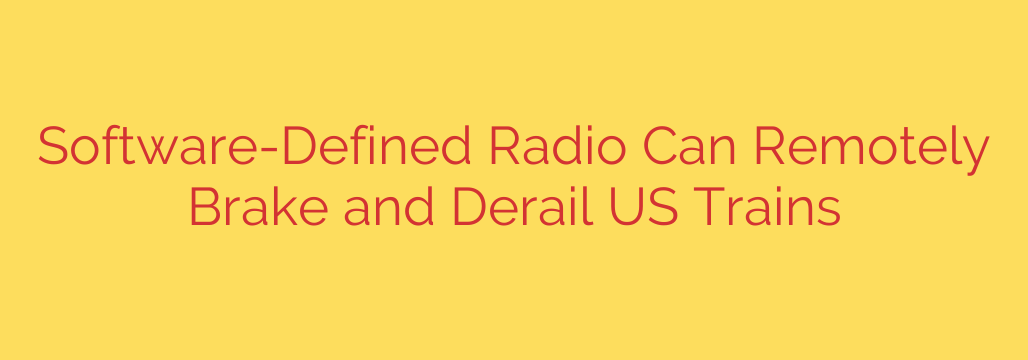
Modern rail systems rely heavily on sophisticated wireless communication for everything from tracking and signaling to safety-critical functions like braking. While this technology enhances efficiency and safety in many ways, it also introduces potential vulnerabilities. One area of concern involves the increasing accessibility and capability of technology like Software-Defined Radio (SDR).
Software-Defined Radio (SDR) is a radio communication system where components traditionally implemented in hardware (like mixers, filters, modulators) are instead implemented by means of software on a personal computer or embedded system. This flexibility allows users to transmit and receive a wide range of radio frequencies and signal types, often with relatively low-cost equipment.
The potential security risk arises when these powerful and versatile tools can interact with the radio frequencies used by critical railway control and communication systems. Researchers and security experts have demonstrated that, under certain conditions and with sufficient technical knowledge, SDR could potentially be used to interfere with or even control vital train operations remotely.
Specific vulnerabilities highlighted include the possibility of transmitting signals that could command a train to brake unexpectedly or potentially interfere with signaling and control systems in a way that could lead to a derailment. This isn’t merely theoretical; the underlying wireless protocols used in some critical rail infrastructure might not have originally been designed with robust modern cybersecurity defenses against this type of attack.
The implications of such a vulnerability are profound. A successful remote attack using SDR could have catastrophic consequences, including significant loss of life, widespread disruption of transportation and supply chains, and severe economic damage. It underscores the fact that critical infrastructure, like the US railway network, is increasingly susceptible to cyber and electronic threats, not just physical ones.
Systems like Positive Train Control (PTC), designed to prevent accidents, rely heavily on wireless communication. Ensuring the security and integrity of these communication links against advanced radio threats like those posed by SDR is paramount.
Addressing these vulnerabilities requires a multi-faceted approach:
- Comprehensive security assessments: Railways must proactively test their wireless communication systems against potential SDR-based attacks.
- Enhanced encryption and authentication: Implementing stronger cryptographic measures to ensure that only authorized signals are acted upon.
- Physical security: Protecting railway radio infrastructure from physical tampering.
- Regulatory updates: Ensuring that standards for railway communication systems incorporate robust cybersecurity requirements that anticipate evolving threats like SDR.
- Collaboration: Fostering greater cooperation between cybersecurity experts, the rail industry, and government agencies.
The potential for Software-Defined Radio to be exploited for malicious interference with train systems serves as a stark reminder of the evolving threat landscape facing critical infrastructure. Prioritizing and investing in the cybersecurity of railway communication is essential to safeguard public safety and economic stability.
Source: https://go.theregister.com/feed/www.theregister.com/2025/07/14/train_brakes_flaw/








